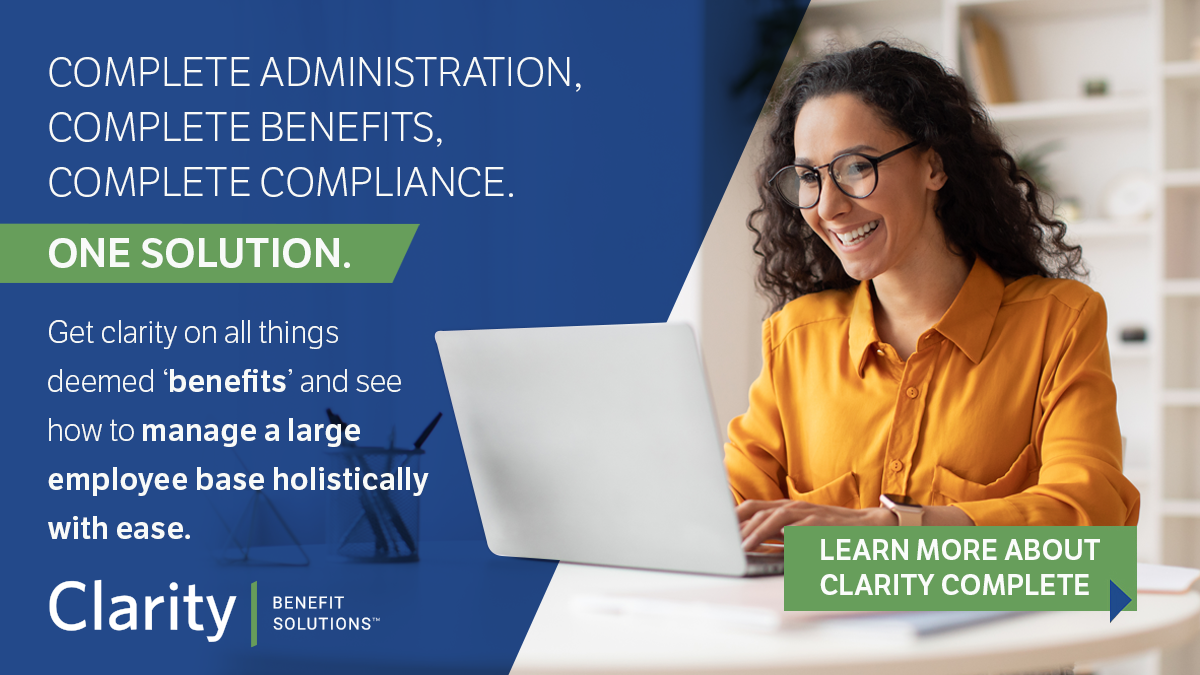
If you’re an employee’s first employer, they’re likely to have little experience with consumer benefits and need some guidance. But even if you’re not, it’s possible that some employees will have either never selected a benefits package or may be unfamiliar with your offerings. It is also possible that some employees who have had employer provided benefits for years never realized all of what is available to them, or never fully understood which benefits would be most valuable to their specific situation.
Either way, employers should play the role of an advisor to employees, helping them discover the right benefits packages that best suits their needs and maximize their hard-earned dollars. If you typically take a hands-off approach when your employees prepare for enrollment, now might be the time to switch gears. Being an active part of the process can increase participation and engagement with offerings and improve the overall experience with your benefits package.
Explore employee benefits package examples and see tips for helping employees discover the right benefits package that best suits their needs:
Look at their demographic information
There is no “one size fits all” approach to benefits. What’s useful to some may not be useful to others depending on a number of factors. Demographic information such as age, family status, and where they live can all influence what someone is looking for in a benefits package.
For example, some employees who are younger Millennials will likely value a student loan repayment assistance program, while older Millennials and Gen Xers might place more value in elective procedure coverage, onsite food service, and wellness programs, and still others might be interested in retirement planning tools. Taking the time to know your employees’ information beyond their job title will help you suggest the right benefits package for them.
Find out their priorities
While it’s easy to determine what priorities your employees have for their day-to-day tasks, determining their priorities on a larger scale requires a little more time and effort. While this differs on an individual basis, some common priorities include:
- Career development -- professional development and higher education benefits like tuition reimbursement and time off for conferences or courses
- Work-life balance -- benefits that increase someone’s ability to be with their family, like work-from-home schedules or flexible work hours
- Family -- benefits that allow employees to care for their families, like Dependent Care Plans and Life Insurance
- Financial security -- benefits that help employees stay prepared for potential future financial burdens, like a Health Savings Account (HSA)
While these are just some of the possibilities, they are good jumping points to start conversations with employees.
Tailor recommendations to the individual
The only way to recommend benefits that will best suit an individual’s needs is to take it on an individual basis. This means taking the time to plan for and work through different scenarios for employees who have varying lifestyles and needs. Understanding that while they are an employee they are also a unique individual outside of work, will help employers to provide the best options for each employee. Consider if they could have family obligations, homeowner status, and anything else that can impact which benefits would work best for them.
When you are ready to give recommendations or resources, make sure they are only what’s relevant to that person. This creates a more engaging benefits experience and opens the door for them discovering new benefits that will work for them in the future.
Give them the tools for success
This process is not about just giving your employees information -- it’s about empowering them with the right tools to make the best decisions they can. Set them up for success by giving them the proper tools to find, enroll in, and engage with benefits. For example, Clarity’s benefits administration software provides individuals with decision support tools that help them select the right plan out of all their options. Clarity also offers a Consumer Benefits Renewal portal so individuals can renew their coverage and access resources on their own- even remotely.
Remember, you’re the expert in the eyes of the employee. They’ll appreciate you taking the time to steer them in the direction of helpful benefits technology they might not otherwise discover. If you need any assistance in creating a benefits package or giving your employees the tools they need to successfully interact with their benefits, contact the experts at Clarity Benefit Solutions.
Sources:
